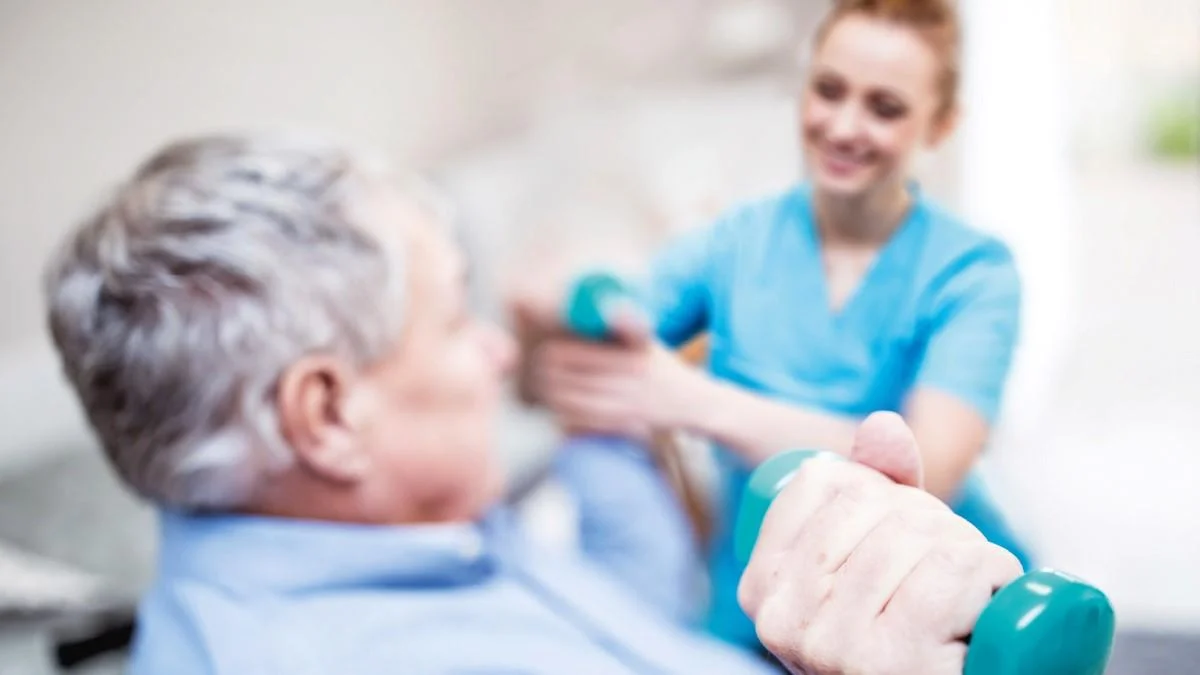
The diagnosis of a chronic lung condition—such as Chronic Obstructive Pulmonary Disease (COPD), pulmonary fibrosis, or severe asthma—often feels like an end to active living, an inevitable progression toward immobility dictated by shortness of breath (dyspnea). However, modern respiratory medicine offers a profound, underutilized intervention known as Pulmonary Rehabilitation (PR). PR is not a one-size-fits-all set of breathing exercises; it is a meticulously coordinated, evidence-based, multidisciplinary program designed to stabilize, manage, and reverse the physical and psychological deconditioning that inevitably accompanies chronic respiratory illness. It is a highly personalized form of therapy that integrates supervised physical conditioning, personalized nutritional counseling, education on disease self-management, and psychosocial support. The underlying necessity for PR stems from the vicious cycle of breathlessness: when breathing becomes difficult, patients instinctively reduce their activity, which leads to muscle weakness and further breathlessness, accelerating the decline in their quality of life. Breaking this cycle requires a structured, safe, and motivating environment, transforming the patient from a passive recipient of oxygen and medication into an active participant in their own physical restoration and long-term disease management.
The Diagnosis of a Chronic Lung Condition Often Feels Like an End to Active Living
The emotional impact of constantly struggling for air cannot be overstated. The diagnosis of a chronic lung condition often feels like an end to active living, leading to feelings of anxiety, depression, and profound loss of autonomy. Patients begin to avoid physical and social activities that might trigger shortness of breath, initiating a rapid physical deconditioning. This avoidance behavior is logical but detrimental: when the body’s major muscles (especially in the legs) weaken, they demand proportionally more oxygen to perform the same task, thereby increasing the burden on the already compromised lungs. Pulmonary Rehabilitation is specifically engineered to counteract this psychological and physiological collapse, teaching patients that breathlessness is manageable and that controlled exercise, even with severely limited lung function, can rebuild muscle strength, reduce oxygen consumption, and restore a sense of control over their physical world.
PR Is a Meticulously Coordinated, Evidence-Based, Multidisciplinary Program
The success of PR is rooted in its holistic, integrated structure, drawing on various specialties to address the systemic effects of lung disease. PR is a meticulously coordinated, evidence-based, multidisciplinary program involving a core team that typically includes a pulmonologist, a respiratory therapist, a physical therapist, a dietitian, and a psychologist or social worker. Each team member plays a distinct role: the therapist guides the individualized exercise training, the dietitian addresses the common problem of weight loss or obesity that can complicate breathing, and the psychologist tackles the pervasive issues of depression and anxiety that exacerbate dyspnea. This integrated approach recognizes that chronic lung disease is a whole-body affliction, not just a pulmonary problem, and thus requires systemic intervention to maximize functional capacity.
The Underlying Necessity for PR Stems From the Vicious Cycle of Breathlessness
The physiology of decline in lung disease provides the clearest rationale for supervised conditioning. The underlying necessity for PR stems from the vicious cycle of breathlessness, which is the primary barrier to maintaining functional independence. As the lung disease progresses, the effort of breathing increases, leading to a fear of exertion. This inactivity causes the skeletal muscles, which were previously efficient, to atrophy. Weaker muscles require more oxygen, forcing the patient to breathe harder and faster, increasing dyspnea, and reinforcing the avoidance behavior. PR intervenes directly in this cycle by safely increasing physical endurance. By strengthening peripheral muscles, PR decreases the demand for oxygen during everyday activities, effectively lessening the respiratory burden and making daily tasks less taxing on the lungs.
The Cornerstone of the Program Is Individualized Exercise Training
At the heart of any successful PR program is the physical component, conducted under rigorous medical supervision. The cornerstone of the program is individualized exercise training, carefully tailored to the patient’s current functional capacity, which is typically measured via a six-minute walk test or a shuttle walk test. The exercise regimen is dual-focused: aerobic conditioning (e.g., walking, cycling) to improve cardiovascular and muscle efficiency, and strength training to rebuild lost muscle mass. Crucially, the exercise is performed while the patient is closely monitored for blood oxygen saturation (SpO2) and heart rate, often utilizing supplemental oxygen to push the patient safely past the point of their usual breathlessness, challenging their limits in a controlled environment to build tolerance and confidence.
Education on Disease Self-Management Is a Central Goal
Pulmonary rehabilitation is designed to empower the patient with the knowledge required to take control of their condition outside of the clinic. Education on disease self-management is a central goal of the program, transforming complex medical instructions into actionable daily practices. Patients learn essential skills, including the correct use of various inhaler devices, how to properly administer nebulized medications, the crucial warning signs of an exacerbation (a sudden worsening of symptoms), and the appropriate, planned response to those worsening symptoms (e.g., when to initiate a course of rescue steroids or call the physician). This knowledge transfer significantly reduces emergency room visits and hospital readmissions, as patients are equipped to manage minor fluctuations at home before they escalate into crises.
Teaching Patients How to Utilize Specific Breathing Techniques Is Essential
A core functional skill imparted in PR is the mastering of techniques that optimize ventilation and reduce the wasted energy of inefficient breathing. Teaching patients how to utilize specific breathing techniques is essential for managing acute breathlessness. Two primary techniques are prioritized: Pursed-Lips Breathing (PLB) and Diaphragmatic (Belly) Breathing. PLB involves inhaling slowly through the nose and exhaling slowly through pursed lips, which creates a back-pressure in the airways. This counter-pressure prevents the small airways from collapsing prematurely (a problem common in COPD), allowing for more complete exhalation, reducing trapped air, and improving gas exchange. Diaphragmatic breathing helps patients engage the stronger, lower respiratory muscles, making breathing less reliant on the accessory muscles in the neck and shoulders.
Comprehensive Psychosocial Support Addresses the Inevitable Anxiety
Living with the constant threat of breathlessness is a tremendous source of psychological distress that directly impacts physical function. Comprehensive psychosocial support addresses the inevitable anxiety and depression that accompany chronic respiratory illness. Anxiety itself can trigger a pattern of rapid, shallow breathing that increases dyspnea and perpetuates the cycle of fear and inactivity. The PR program integrates counseling, group therapy, and stress reduction techniques to help patients understand the physiological connection between their emotional state and their breathing. By learning coping mechanisms, patients can break the panic cycle, regain confidence in their body’s ability to manage exertion, and improve their adherence to the physically demanding components of the rehabilitation program.
Nutritional Status Directly Impacts Respiratory Muscle Function
The high caloric expenditure of labored breathing, combined with potential appetite suppression from medication or chronic disease state, often leads to significant weight issues that compound the respiratory burden. Nutritional status directly impacts respiratory muscle function, making dietary counseling a mandatory part of PR. Underweight patients with COPD often require increased caloric and protein intake to rebuild muscle mass, including the crucial respiratory muscles like the diaphragm. Conversely, obese patients may need to focus on healthy weight loss to reduce the massive mechanical load that excess abdominal fat places on the chest wall, thereby making the work of breathing significantly easier. The dietitian’s role is to craft a customized, calorie-appropriate plan that manages both macro and micronutrient deficiencies.
The Ideal Candidates Are Those Who Experience Significant Disability
While nearly any chronic lung patient can benefit, the resources of a comprehensive PR program are best directed toward those with the most to gain. The ideal candidates are those who experience significant disability—patients with moderate to severe COPD (Global Initiative for COPD [GOLD] stages II through IV), those preparing for or recovering from lung transplant or reduction surgery, or those with significant functional limitations due to interstitial lung diseases like pulmonary fibrosis. These are the individuals whose quality of life, exercise tolerance, and rate of hospitalization are most dramatically and demonstrably improved by completing a structured, 8- to 12-week rehabilitation program. The benefits extend far beyond a change in FEV1 (Forced Expiratory Volume in 1 second); they are measured in the ability to climb stairs, dress independently, and engage socially.
Long-Term Adherence to the Principles Is Necessary to Maintain Gains
Pulmonary rehabilitation is not a cure, and its benefits are transient unless the patient embraces its principles as a permanent lifestyle change. Long-term adherence to the principles is necessary to maintain gains achieved during the initial structured phase. Once the formal program concludes, patients are strongly encouraged to join a supervised maintenance program or establish a consistent home exercise routine. Without this continued commitment to physical activity, the deconditioning cycle will inevitably reassert itself, and the patient will slowly regress to their previous functional limitations. The true measure of PR’s success is not the improvement at the end of the 12 weeks, but the patient’s sustained functional independence one or two years later.
